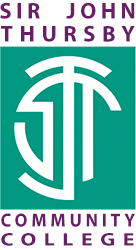Topic 4 Year 9 Computing
| Computing | |||
| Topic | Data Handling | ||
| No of lessons | 6 | ||
| When is it happening | Year 9 Term 3 | ||
| What will students learn | Students will learn about different types of questioning techniques such as precise, open ended and leading questions. Students will understand how data can be collected by using different types of questions such as multiple choice. Students will also learn how to ask short questions which can be answered precisely and get a better response. Students will design their own questionnaire based on a project. Students will collect responses for their questionnaires and enter data using Microsoft Excel. Students will learn to enter, format and sort data. Students will learn to use formulas such as addition, subtraction, AutoSum and average. Students will learn how to create range of charts such as graphs, pie chart and line graph. Students will manipulate data to explain their findings. Students will prepare a report on their findings. | ||
| Key Knowledge that students should know at the end of 'Topic' | This is the knowledge that students will meet for the first time in this topic | Students can: identify the difference between precise, open ended and leading questions. Based on this knowledge they will practice writing different types of questions and design a questionnaire for their project. Identify steps used to enter data into a spreadsheet. Can explain why different formatting techniques are required to present data. Can explain why addition, subtraction, AutoSum or average formulas are required to sort or manipulate some data. Explain why charts can be useful to present data i.e. graphs, pie charts etc. Be able to manipulate data to explain findings. | |
| This is knowledge that students may have met before but will need to deepen their understanding | Simple arithmetic, such as addition, subtraction, AutoSum and average. | ||
| Key Skills that students should be able to demonstrate at the end of 'Topic' | This is the skills that students will meet for the first time in this topic |
Students can create their own questionnaire using different questioning techniques based on a scenario. Practice using different formulas such as addition subtraction, AutoSum and average. |
|
| This is skills that students may have met before but will need to develop |
Correct use of formatting tools to present data Use of addition and subtraction formulas. Use of charts such as graphs, pie charts and line graphs to present data. |
||
| Key vocabulary that students should know and understand |
Data handling, Questionnaires, Precise, Open ended, Leading, Enter, Format, Sort, Add, AutoSum, Average, Highlight, Insert, Charts, Graph, Pie chart, Percentage. Importance, Understand, Collect, Sort, Calculate, manipulate, Describe, Present |
||
| The Big Question | How to collate and use data to present findings? | ||
|
Key questions that students should be able to answer at the end of the 'Topic' |
What is a questionnaire and how to design an effective questionnaire based on a project? | ||
| How to enter data on a spreadsheet and use different formulas? | |||
| How to format spreadsheet? | |||
| How to use the filtering tools to sort data? | |||
| How to create simple charts using data collated from the questionnaires? | |||
| How to analyse and explain data from the filtering and charts/graphs? | |||
